Creating green buildings that work for people and the planet
THE ARTICLES ON THESE PAGES ARE PRODUCED BY BUSINESS REPORTER, WHICH TAKES SOLE RESPONSIBILITY FOR THE CONTENTS
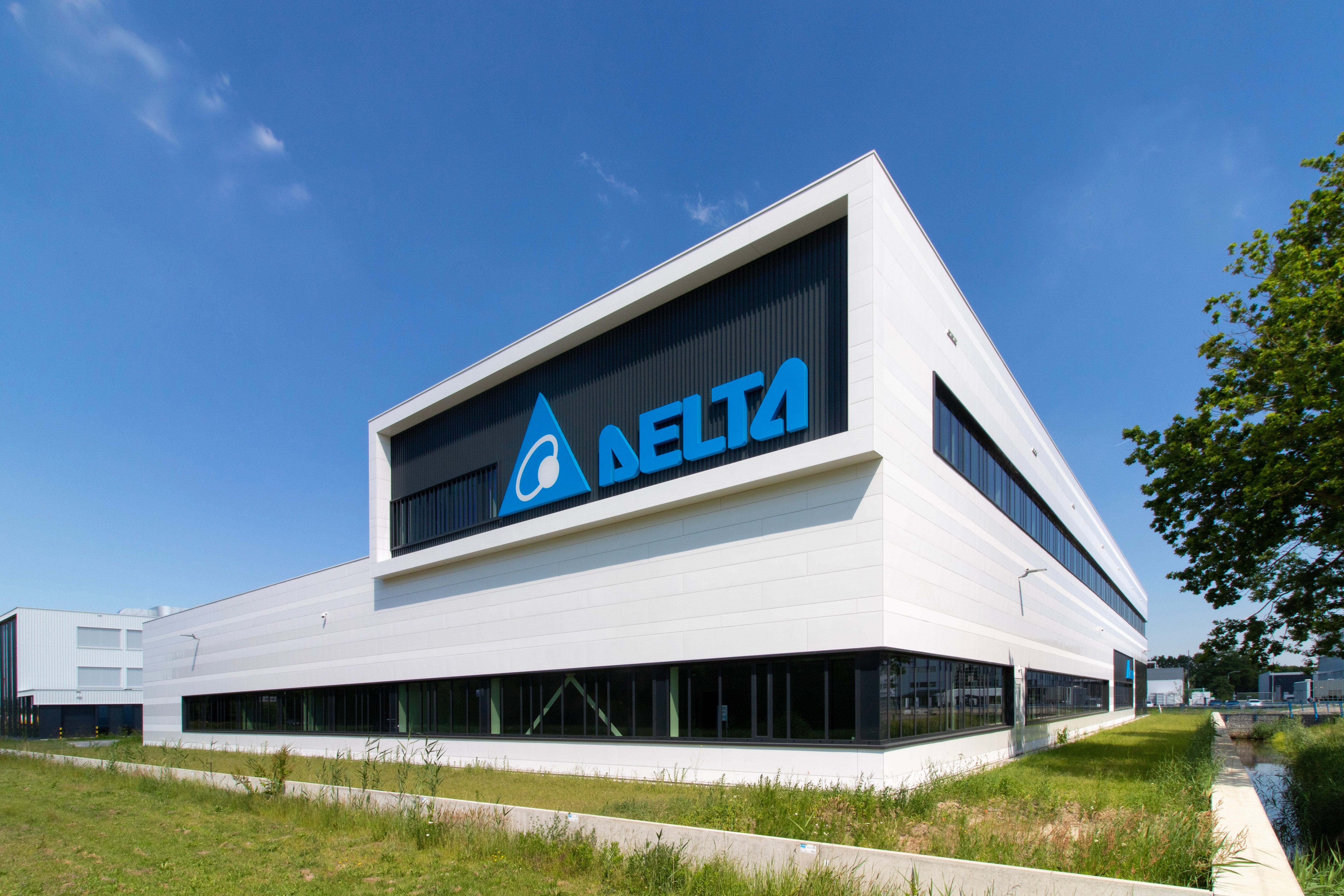
Delta Electronics is a Business Reporter client
It’s about much more than the financial side – it’s about influencing the culture of the company itself.
We’ve come to expect all new buildings to be green. But is considering their environmental impact enough? What about the people who live and work in and around these properties?
Good design coupled with technology not only protects a building’s occupants but actually enhances their experience of it – making the building sustainable in more than one sense.
That’s the view of Dalip Sharma, EMEA President and General Manager of Delta Electronics, which develops next-generation sustainable solutions for smart cities, energy-efficient ICT infrastructure, and green energy solutions.
Here, Sharma explains why he is passionate about creating environments that work for people and the planet, using a human-centric approach to creating sustainable buildings that enhance the health and happiness of the people who use them.
How would you classify a sustainable building?
It all starts with the choice of the site itself, but equally important is the design – the materials you use, how energy efficient it can be, the kind of technologies deployed.
The most certain way to validate a building’s sustainability is certification to the standards set by either Leadership in Energy and Environmental Design (LEED) or the Building Research Establishment Environmental Assessment Method (BREEAM).
For a building to be certified green, which is what we at Delta always aim for, you need to make sure everything you put into the building is as energy efficient as possible, whether it’s the network, the lighting or sensors. My advice would be to try to automate every aspect of the building rather than leave it to human intervention – harness technology’s ability to make the building more efficient.
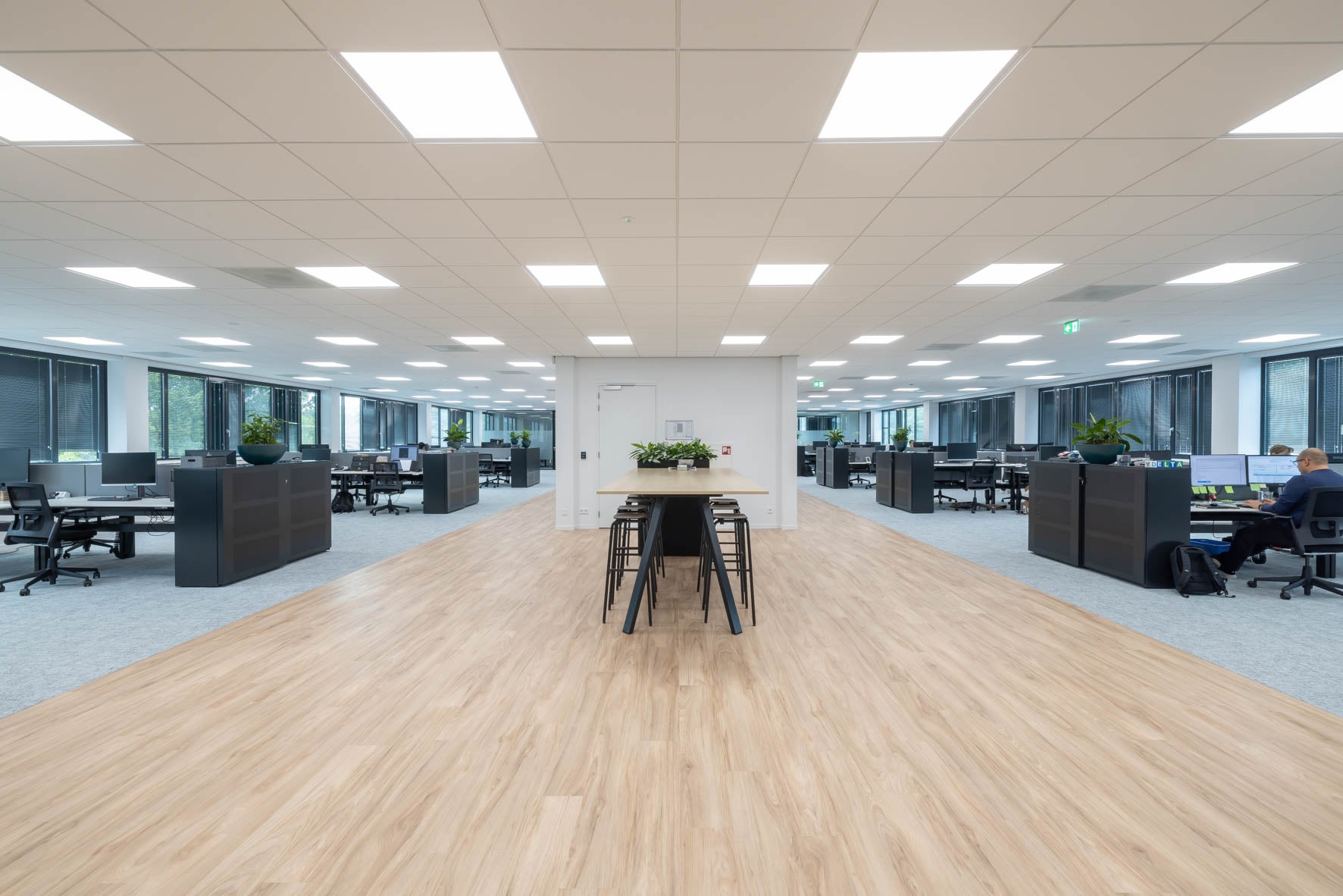
But the technology in itself is not enough. It’s about sincerity of purpose – you must be committed to all aspects of the project. Even if you are leasing the building, there has to be a possibility of improving it. And that means ensuring you will be permitted to install rooftop solar panels, for example.
If you can generate all or some of your own power you should do so, but whatever energy you use, it has to be from certified green sources. That’s certainly our commitment at Delta. Delta now has 32 owned or donated green buildings and two green data centers. Our global business has also signed up to the RE100 initiative, which commits us to using 100 per cent renewable energy, a goal we plan to achieve by 2030. We’ve been working towards this goal since 2017 using science-based targets.
It goes without saying that the materials used in the building should be recyclable. This includes ensuring that all water used is then reused for non-potable purposes like flushing the toilets. It’s also often possible to recycle the energy used within the building itself.
Finally, it’s essential to consider the environment within which the building exists. It’s not enough to make the place look beautiful with artificial or generic office plants – find species that are local to your area. You must recognise that your building exists in the local environment. Water management, for example, is a critical element of its impact on local flora and fauna. It all comes back to your sincerity of purpose.

You’ve described what makes a building sustainable. Can you tell us about a green building that Delta has built from scratch?
Our new sustainable facility at Helmond in the Netherlands embodies all the things I have been talking about. It is home to 150 of our employees and covers an area of over 4,000 square metres. We’ve earned LEED gold certification thanks to its design and the use of energy-saving solutions, with more than 1200 Delta energy-efficient products installed, from lighting to EV charging. In fact, the building’s energy costs are almost 57 per cent lower than they would have been in the case of a conventional building of the same size.
The roof has been designed to reflect the sun to reduce cooling costs and we have 360 solar panels which, on a sunny day, generate 133kW of energy with our 98.8 per cent efficiency PV inverter – effectively giving us net-zero electricity. The building’s energy consumption is constantly monitored using our Energy Online management system.
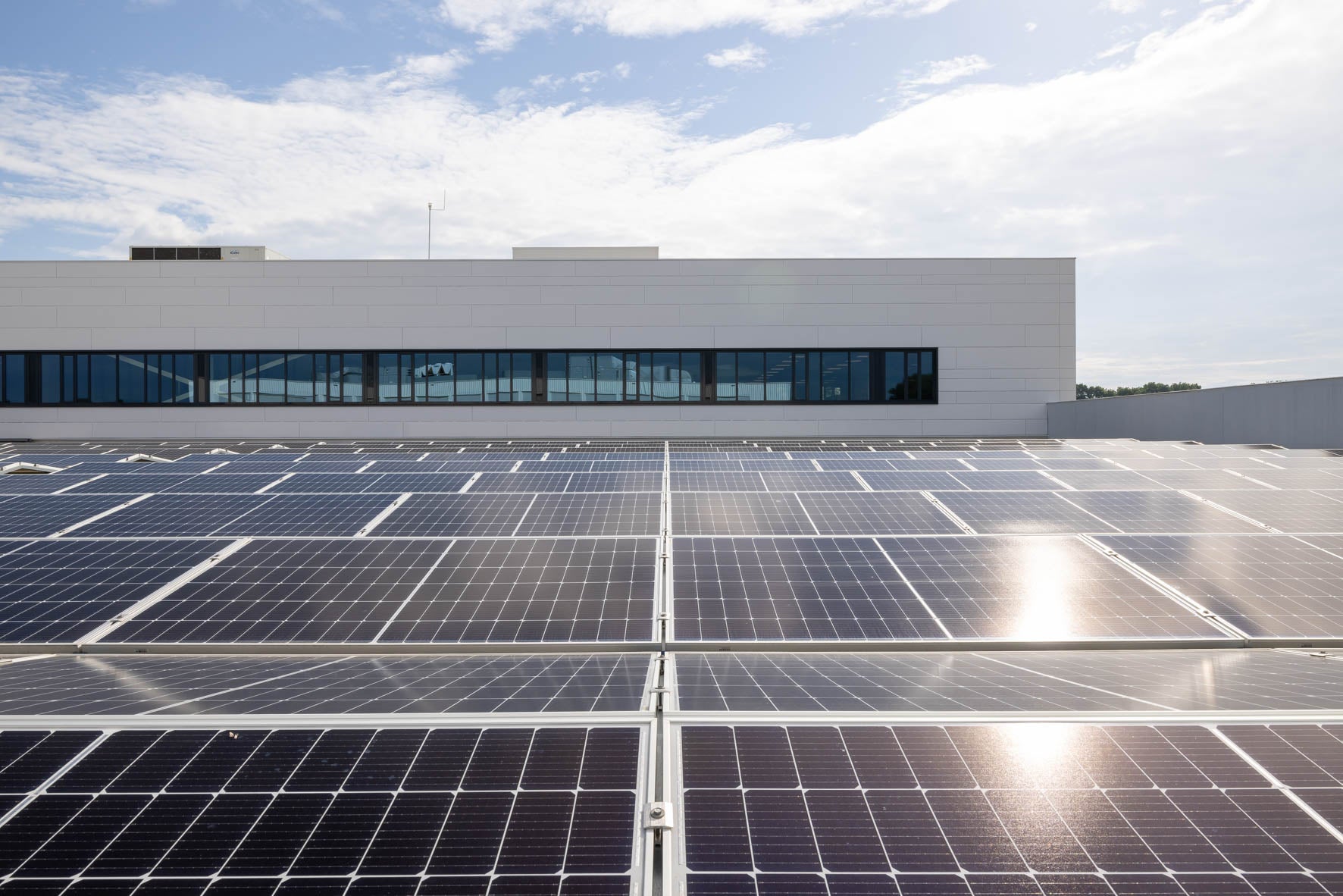
Heating, ventilation, air conditioning and lighting systems adapt automatically to the number of people in different areas of the building. This is thanks to sensors and controllers from Austrian-based Loytec and Canadian-based Delta Controls – both Delta Group companies.
Energy efficiency and sustainability have been part of our mission since the inception of the company. We don’t believe in doing business at the cost of the environment – rather, we believe in doing business while contributing to the environment as a responsible corporate citizen. That has always been our goal and you can see it in the buildings we design.
Even outside the building at Helmond, we’re designing for energy efficiency. The landscaping includes trees that provide shade to help with cooling as well as providing a pleasant work environment. It’s the fourth green building project I’ve been involved with at Delta and it has been the most exciting because we set out to make it sustainable from every point of view. So it’s a showcase for our commitment to green buildings and our own efficiency solutions.
Can you also apply these principles when retrofitting old buildings?
Yes. Our EMEA corporate headquarters at Hoofddorp in the Netherlands, where I work, is a really good example of how this can be done. The building certainly wasn’t green when we started – it was built 35 years ago – but it’s been entirely retrofitted and is now accredited with BREEAM’s “Very Good” standard. It has a green hub that generates and manages its own energy using rooftop solar panels and energy storage.
The building also supports 16 electric vehicle (EV) chargers for our employees’ and company EVs. To minimise the impact to the grid with the installation, we have implemented the EV Infrastructure solutions. The whole system is controlled by our DeltaGrid EVM, which manages EV charging while optimising solar power and energy storage utilisation. Our 50kW rooftop solar energy system generates over 42,000 kWh of green electricity each year and any excess energy goes into a battery energy storage system capable of holding 293 kWh, to make sure that we achieve peak shaving and load shifting, to provide the sufficient power for EVs without creating a huge impact on the grid.
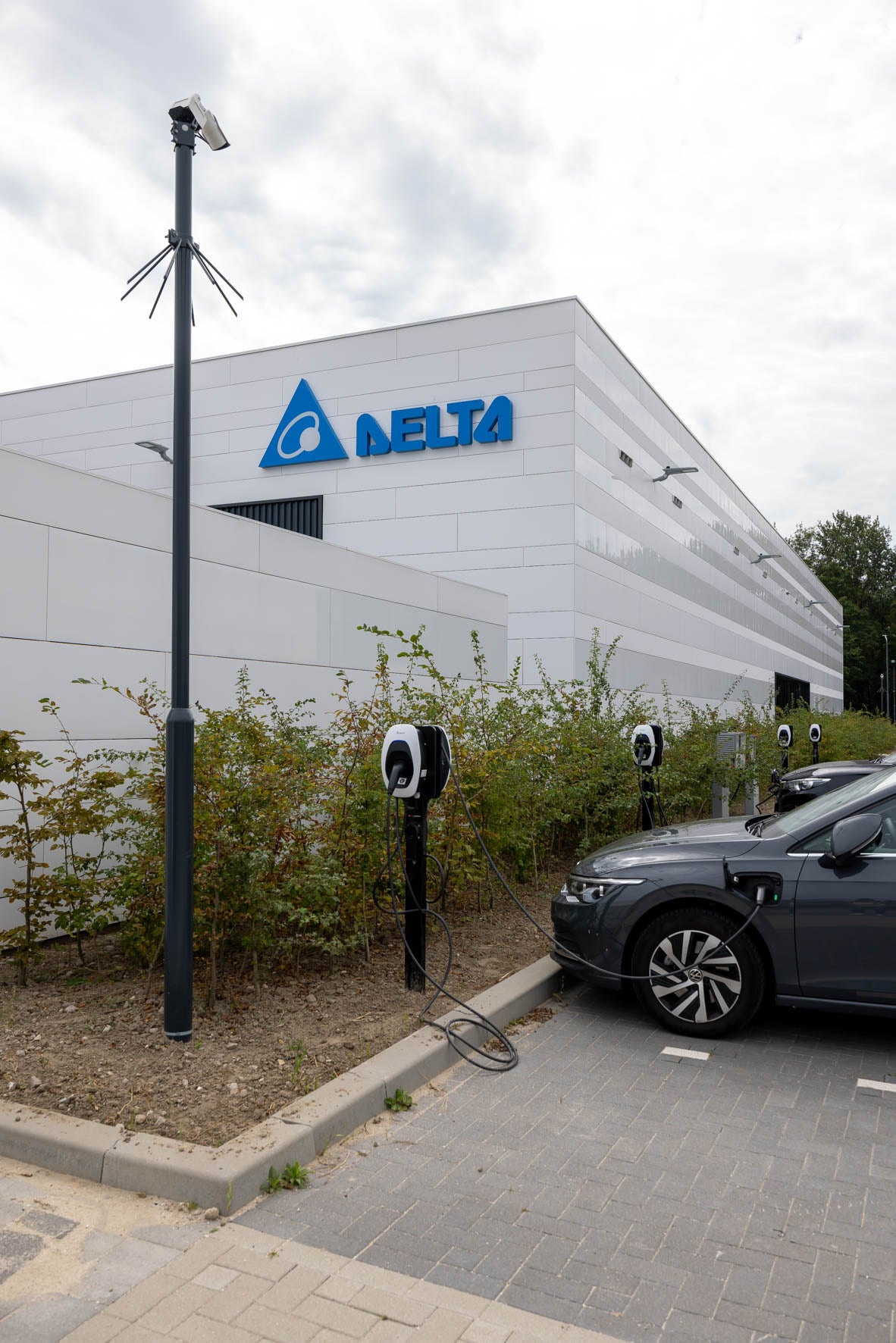
For Delta, it’s about coming up with a complete solution that works for a particular location. Hoofddorp has allowed us to demonstrate the effectiveness of our own energy efficiency technology. So, yes, you can make any legacy building into a green building if you stay true to the principles of sustainability.
What about the people who work in and live around sustainable buildings? What needs to be considered there?
We are aiming at the WELL building standard, which is not just about the building but the environment within the building. This involves asking ourselves many questions. Are we using human-centric lighting? Are we creating open spaces for people to relax in? Is the building green from the inside with plants used in ways to make employees feel better?
An important consideration is air quality. Here in Delta we use our UNOnext Indoor Air Quality Monitor to continuously monitor real-time data for seven types of harmful indoor air factors such as carbon monoxide (CO), carbon dioxide (CO2), fine suspended particulates (PM2.5), suspended particulates ( PM10), formaldehyde (HCHO), ozone (O3), total volatile organic compounds (TVOC) and temperature, humidity, illuminance, etc.
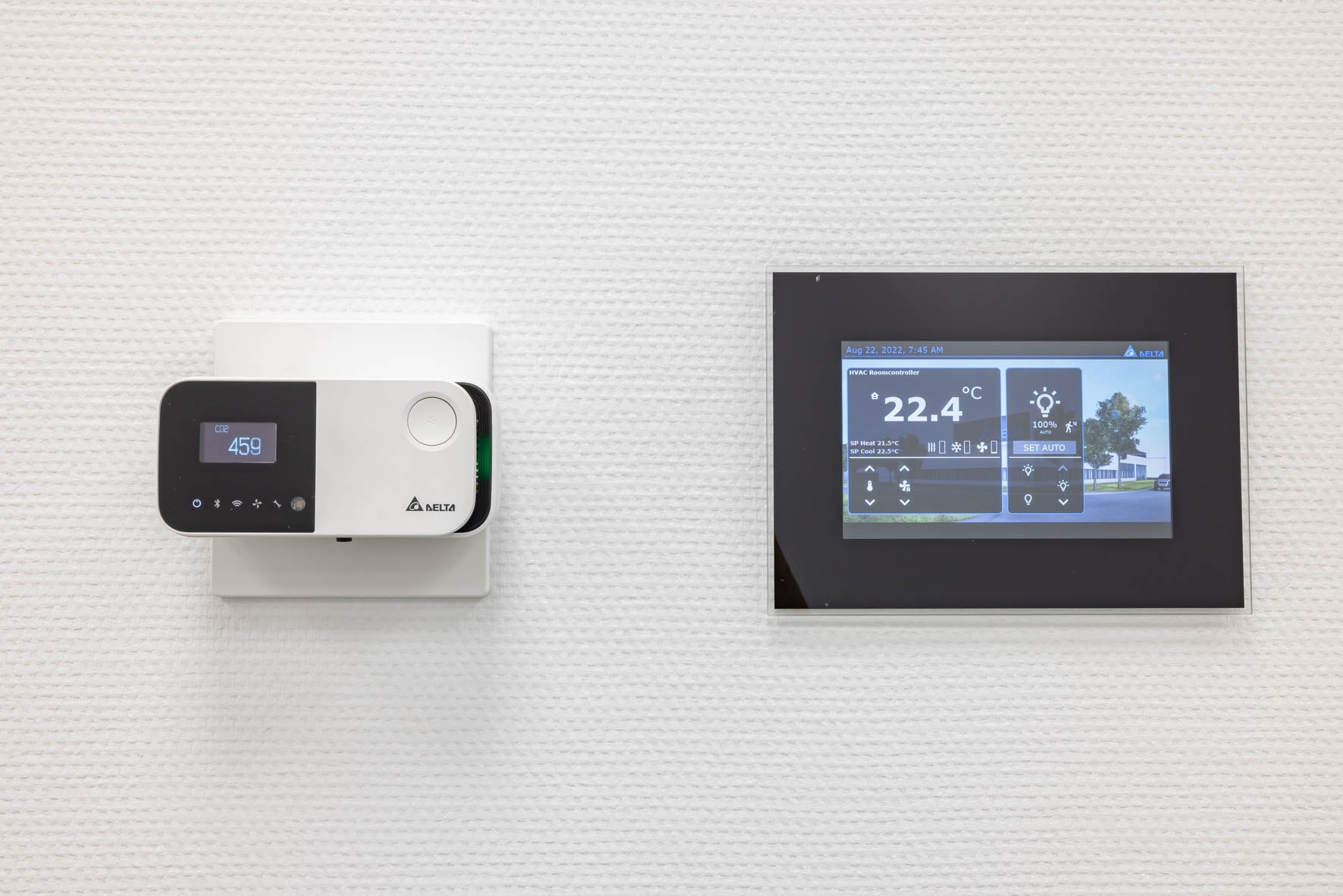
The building at Helmond also has a human-centric LED lighting system that uses very little energy and automatically adjusts light levels according to the prevailing conditions. All of these things are becoming more important and we are pursuing them in all our new buildings.
We also realise it is expensive to build these types of buildings compared with conventional ones. However, we plan to stay in this building for several decades, so from a commercial perspective, the benefit over time from such a building is much larger than the upfront investment. But it’s about much more than the financial side – it’s about influencing the culture of the company itself.
This approach is also a big help when it comes to finding the best talent – those who want to work for a company that shares their values and that’s true to its purpose. We need to demonstrate to all our stakeholders, inside and outside of the company, that we really do walk the walk when it comes to sustainability.
This sense of responsibility for the environment is shared by many of our employees and that is key: it’s what keeps driving us. Every engineer, every employee, understands why we do this and most of our people apply these principles in their private lives, too, by making their own homes more sustainable.
For Delta, this is all part of Sustainability 2.0, focusing not just on the buildings but also on the wellbeing of the people who work in them.
Originally published on Business Reporter
